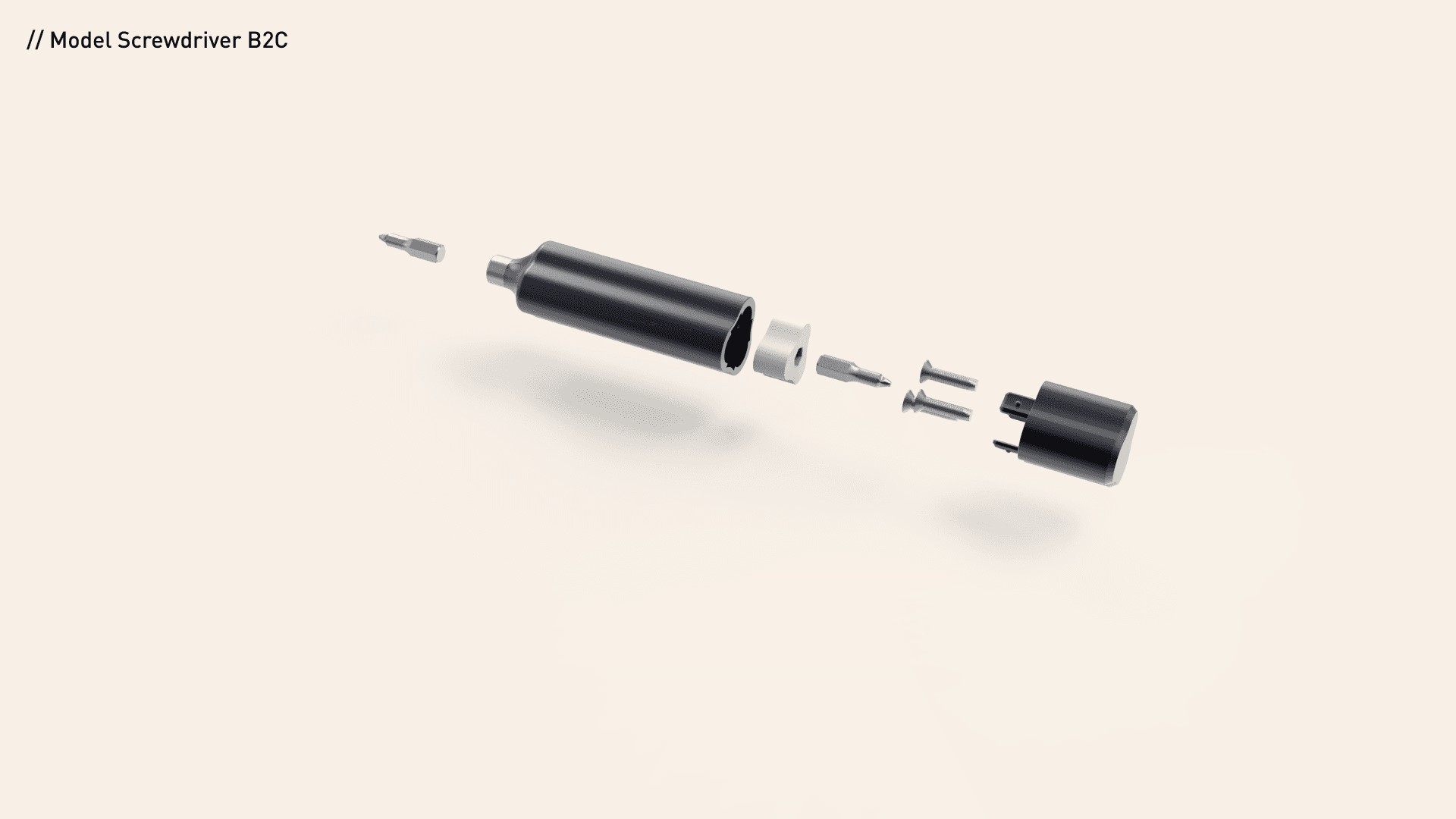Screw Dna / AI Algorythm
Startup / Design
Role
Ideation Conception Algorythm Cad
Tools
Figma / Rhino3D /3D Printing /Adobe Suite / Grashopper / Chat GPT / Keyshot

Stage 1. Philosophical Approach
How can material be secured without the use of adhesives?
This question inspired the development of a non-mechanical lock that securely holds materials and can be opened and closed like a traditional lock. It is effective for both small and large components.
The screw drive algorithm enables the securement of materials or objects through customization.
Stage 2. Usecases
The use case focused on researching potential markets for the technology. It involved analyzing the market, identifying where thefts occur in our society, and determining the points at which the technology can effectively intervene.
Stage 3. Ai Algorithm
The algorithm was designed to provide the highest possible level of security for the customer. It was developed through thoughtful parametric adjustments to the screw drive, which differ by minimal variations, enabling a high degree of individualization.



Stage 4. Prototyping
In the prototyping process, we needed to understand how the algorithms behave in the real world. Through iterative processes, we gained valuable insights and refined the algorithm.
Stage 5. User Journey
In der User Journey soll der Kunde ein entspannter Austausch und Einkauf der Schrauben stattfinden.
Du Objekterkennung soll die Schraube definiert werden.
Im Nächstenschritt soll die Schraube für den Kunden generiert werden
Und dann im Einkaufsprozess die jeweilige mänge und wenn gegeben auch andere Größen nachbestellt werden könnnen.Die DNA wird Im Strewdna Datenbank sicher aufbewahrt und für zukünftige Käufe hinterlegt.
Man hat die Möglichkeit unterschiedliche schrauben ziehe für die jeweiligen Nutzer auszuwählen.
Im Checkout Prozess hat man die Möglichkeit unterschiedliche Bezahlsysteme zu nutzen


Screw Dna / AI Algorythm
Startup / Design
Role
Ideation Conception Algorythm Cad
Tools
Figma / Rhino3D /3D Printing /Adobe Suite / Grashopper / Chat GPT / Keyshot

Stage 1. Philosophical Approach
How can material be secured without the use of adhesives?
This question inspired the development of a non-mechanical lock that securely holds materials and can be opened and closed like a traditional lock. It is effective for both small and large components.
The screw drive algorithm enables the securement of materials or objects through customization.
Stage 2. Usecases
The use case focused on researching potential markets for the technology. It involved analyzing the market, identifying where thefts occur in our society, and determining the points at which the technology can effectively intervene.
Stage 3. Ai Algorithm
The algorithm was designed to provide the highest possible level of security for the customer. It was developed through thoughtful parametric adjustments to the screw drive, which differ by minimal variations, enabling a high degree of individualization.



Stage 4. Prototyping
In the prototyping process, we needed to understand how the algorithms behave in the real world. Through iterative processes, we gained valuable insights and refined the algorithm.
Stage 5. User Journey
In der User Journey soll der Kunde ein entspannter Austausch und Einkauf der Schrauben stattfinden.
Du Objekterkennung soll die Schraube definiert werden.
Im Nächstenschritt soll die Schraube für den Kunden generiert werden
Und dann im Einkaufsprozess die jeweilige mänge und wenn gegeben auch andere Größen nachbestellt werden könnnen.Die DNA wird Im Strewdna Datenbank sicher aufbewahrt und für zukünftige Käufe hinterlegt.
Man hat die Möglichkeit unterschiedliche schrauben ziehe für die jeweiligen Nutzer auszuwählen.
Im Checkout Prozess hat man die Möglichkeit unterschiedliche Bezahlsysteme zu nutzen


Screw Dna / AI Algorythm
Startup / Design
Role
Ideation Conception Algorythm Cad
Tools
Figma / Rhino3D /3D Printing /Adobe Suite / Grashopper / Chat GPT / Keyshot

Stage 1. Philosophical Approach
How can material be secured without the use of adhesives?
This question inspired the development of a non-mechanical lock that securely holds materials and can be opened and closed like a traditional lock. It is effective for both small and large components.
The screw drive algorithm enables the securement of materials or objects through customization.
Stage 2. Usecases
The use case focused on researching potential markets for the technology. It involved analyzing the market, identifying where thefts occur in our society, and determining the points at which the technology can effectively intervene.
Stage 3. Ai Algorithm
The algorithm was designed to provide the highest possible level of security for the customer. It was developed through thoughtful parametric adjustments to the screw drive, which differ by minimal variations, enabling a high degree of individualization.



Stage 4. Prototyping
In the prototyping process, we needed to understand how the algorithms behave in the real world. Through iterative processes, we gained valuable insights and refined the algorithm.
Stage 5. User Journey
In der User Journey soll der Kunde ein entspannter Austausch und Einkauf der Schrauben stattfinden.
Du Objekterkennung soll die Schraube definiert werden.
Im Nächstenschritt soll die Schraube für den Kunden generiert werden
Und dann im Einkaufsprozess die jeweilige mänge und wenn gegeben auch andere Größen nachbestellt werden könnnen.Die DNA wird Im Strewdna Datenbank sicher aufbewahrt und für zukünftige Käufe hinterlegt.
Man hat die Möglichkeit unterschiedliche schrauben ziehe für die jeweiligen Nutzer auszuwählen.
Im Checkout Prozess hat man die Möglichkeit unterschiedliche Bezahlsysteme zu nutzen





Aware / AI Design
Datadriven Urban Development



Brand Strategie / B2B Portfolio
Customer: Startup Pinheiro Beans



Heroes Cloe Light
Light Design